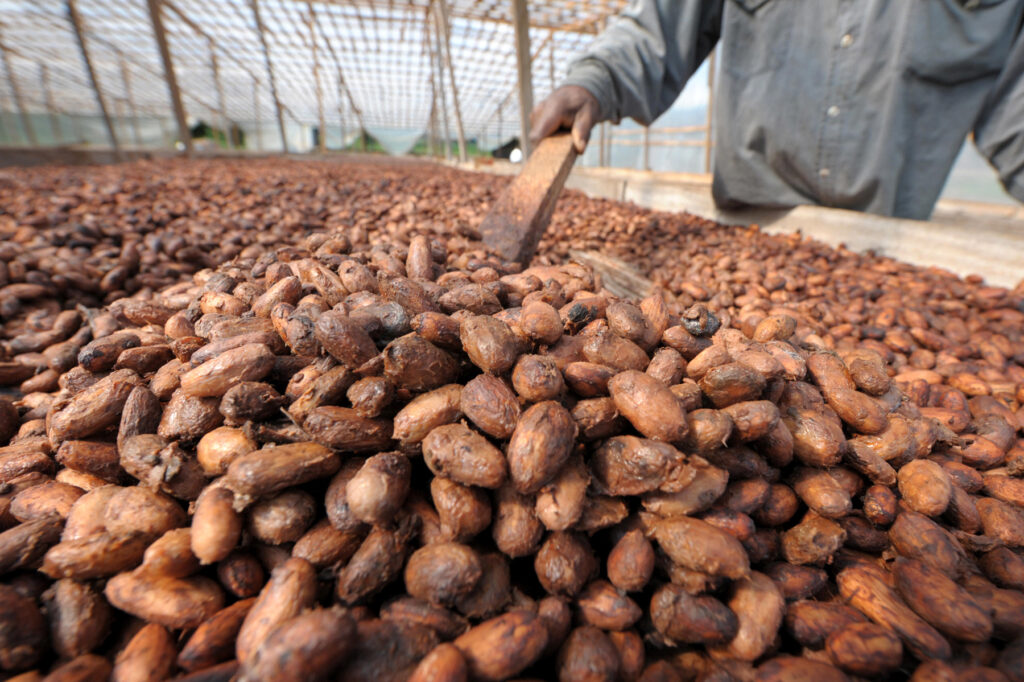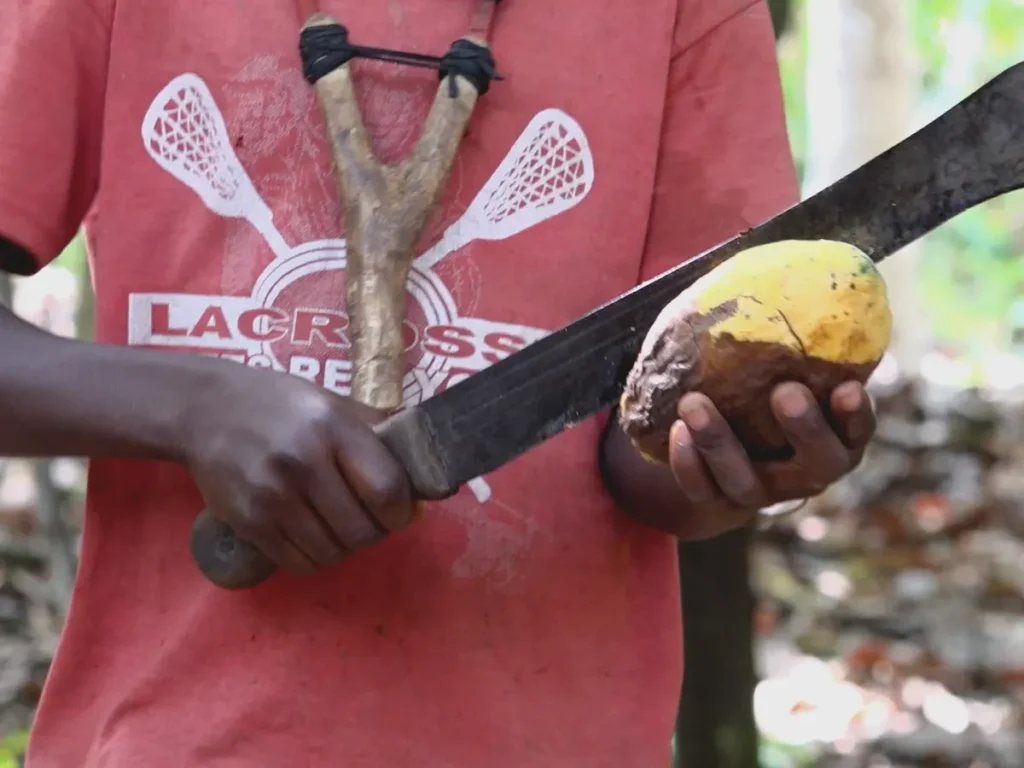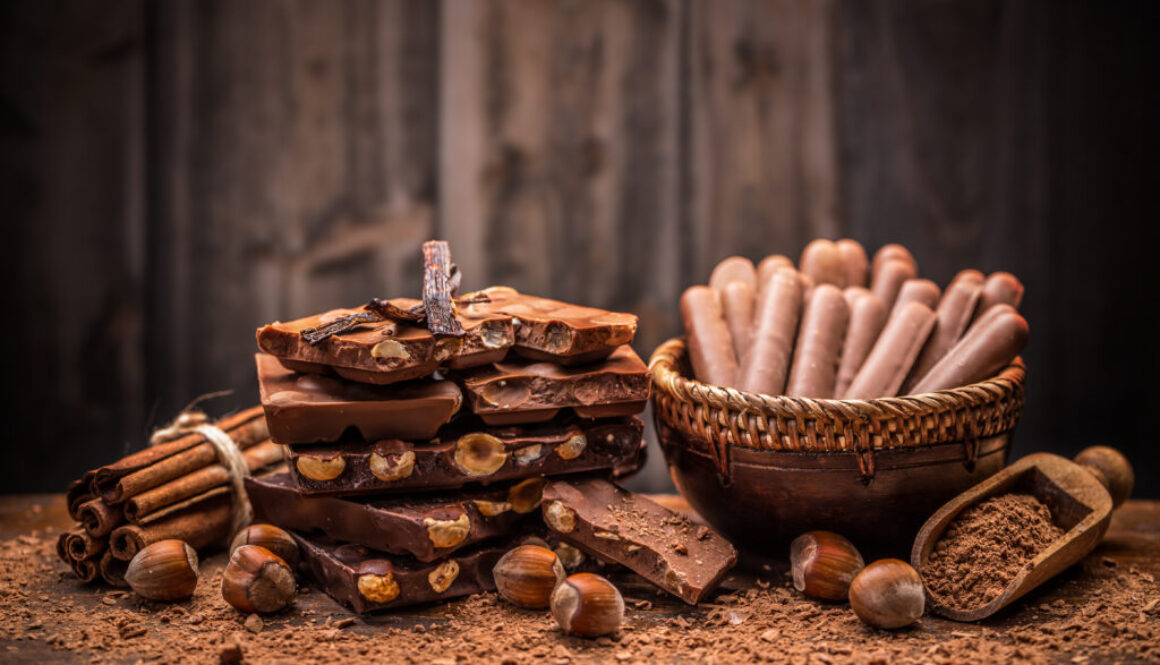The Bittersweet Truth about Chocolate
Eighty percent of the chocolate purchased in the United States in a single year is purchased in the days leading up to Valentine’s Day. As we conclude the month of February, which is so often correlated with the indulgent treat, we reflect on the complex history and present-day reality of the cacao industry. While fair trade certification aims to ensure ethical practices, the majority of cocoa production still occurs through exploitative channels where human rights abuses persist.

Late Classic Maya
Ceramic with polychrome slip
2002-9 source: artmuseum.princeton.edu

Centuries before the first chocolate bar was molded, the Mayan and the Aztec Peoples enjoyed cacao as a savory drink. Cacao was often ground with maize (corn), then mixed with water, flavored with allspice, vanilla, salt, chili powder, and other spices. It was sometimes boiled to create cacahuatl; a version of hot chocolate as we know it today. In the late 16th century, during European conquest, the Spanish added sugar to the concoction to attract a European audience. By the early 17th century, cacao beans and recipes for drinking chocolate had traveled across the sea and spread through the courts of Europe. At that time, chocolate was almost exclusively enjoyed by the wealthy in “chocolate houses,” some of which still stand today. With the second Industrial Revolution (after the Civil War and Reconstruction Era, focusing more on steel production rather than just the steam engine), and the creation of the conching machine by Swiss chocolatier Rodolphe Lindt in 1879, there allowed for a velvety texture and smoother taste, and so the chocolate industry was transformed, making the food more affordable and globally accessible. As demand exploded, so did concerns over the treatment of farmers and workers producing the world’s theobromine (Latin for chocolate and translates to “food of the gods”).
Fair trade is a social activist movement that helps producers in developing countries achieve improved working conditions and promote sustainability. Fair trade efforts can be traced back to the 1940s with Edna Ruth Byler‘s work to support a women’s sewing company in Puerto Rico, as well as the establishment of the Sales Exchange for Refugee Rehabilitation and Vocations (SERRV). SERRV was created in 1949 by the Church of Brethren to support displaced European refugees fleeing Nazi persecution after World War II. These individuals included anti-Nazi leaders, Jewish writers, and artists. The late 1960s saw developing countries push for more equitable trade relationships, contributing to the popularization of fair trade oversight practices. Over the next several decades, the range of fair trade products expanded significantly to include items like coffee, cocoa, and wine. However, many of the ethical and environmental issues surrounding cocoa production persist despite the growth of the fair trade movement.

The cacao industry continues to face major challenges related to the treatment of cocoa farmers, along with the environmental impact of cocoa production. Cocoa farmers, many of whom are small landholders in West Africa, often struggle with poverty and unstable incomes. This makes it difficult to invest in yield improvements and motivates harmful practices like child labor. It is estimated that over 2 million children work in the African cocoa industry, exposing them to hazardous conditions. Meanwhile, growth in cocoa production drives extensive deforestation as forests are cleared for new plantations. The Republic of Côte d’Ivoire (The Ivory Coast of West Africa) has lost over 80% of its forests amid rapid expansion of cacao farming. These issues persist because the majority of the world’s cacao is not fair trade certified, and unethical labor practices continue to remain unchecked. Shockingly, more than 2 million children in Ghana and Cote d’Ivoire work in hazardous conditions harvesting cacao, and many are trafficked into Western African cocoa farms and coerced to work without pay.

Chocolate production and consumption were initially restricted to the equatorial regions of the globe; most notably in Central America, but the Industrial Revolution and scientific discoveries of the 18th and 19th centuries transformed the cocoa and chocolate industries, leading to increased demand and the emergence of West Africa as a dominant cocoa-producing region. The industry has been criticized for its role in contributing to child labor, slavery, and human trafficking, while minimal progress has materialized to eradicate these issues despite commitments by major chocolate companies such as Toblerone, Cadbury, and Nestlé. An investigation done by Britain’s Channel 4 News showed the horrific conditions that farmers experience. Reporter Anthony Barnett spoke with farmers on the Cocoa Life farms in Ghana and found multiple instances of children engaged in hazardous child labor. Some of these children described injuries they received on the farm from using machetes and from snake bites. While these chocolate companies claim they are protecting children and basic human rights, it is evident that this is not the case.
The promises of a fairly traded chocolate empire envision an ethical industry that benefits farmers, protects forests, and allows consumers to enjoy the treat while carrying a clear conscience. To achieve this feat would demand urgent, collaborative action – from companies sourcing fairly; to governments upholding labor standards; and, most importantly, to consumers demanding accountability through purchasing power. Only then can a bitter aftertaste be cleansed from our chocolate palates.
Read the final published version of The Bittersweet Truth at History At Play

